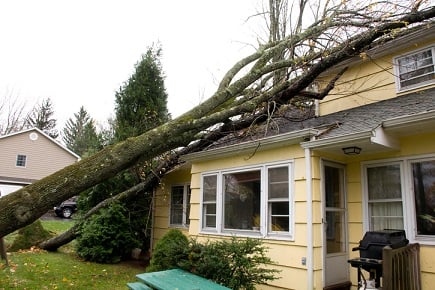It was at Lloyd’s of London, in the calm after the spectacularly awful 2017 Atlantic hurricane season. “This recent loss activity demonstrates the value of private insurance, but also highlights the protection gap,” said Kevin O’Donnell, CEO of RenaissanceRe, organisers of the well-attended gathering of keen-minded specialists.
“Growing the insurance pool and closing the protection gap in the developed world requires a coordinated effort.”
Plain talking just when plain talking was needed. When disaster strikes, the protection gap is the balance that remains after the insured loss is subtracted from the economic loss. If communities fail to fund those losses ex ante through insurance, then the resulting gap in protection coverage of course creates an undue burden on society, both economically and socially.
“What component of risk is funded prior to [catastrophe] is what reduces the uninsured loss,” said O’Donnell. “We can mitigate, and we can pre-fund catastrophes, both of which reduce the protection gap.” Given that resources for pre-disaster financing are limited, decision-making efforts to close the protection coverage gap will require coordination and partnership between the public and private sectors, he said, and the protection gap is most effectively reduced when proper mitigation efforts are implemented pre-disaster. “Mitigation does a great job not only in reducing the protection gap but also making our communities more resilient from the very first step in reducing the economic loss,” said O’Donnell. “Mitigation is a better option when the benefit of mitigation is greater than the cost. Given unlimited resources, you would take that path every time.”
Unfortunately, government resources are far from unlimited, which leaves ex ante risk financing through savings, insurance, or reinsurance as the next best strategy. However, allocating whatever resources are available is almost always politically challenging. “Politicians have difficulty setting money aside for things that haven’t happened yet, particularly when budgets are tight,” said O’Donnell. “You don’t get votes by saving money, you get votes by doing things for people today.”
As a result, many politicians choose to do nothing in terms of mitigation or ex ante funding. “That’s not actually different than ex post funding,” said O’Donnell. “If you’re not mitigating, and you’re not saving, and you’re not putting up ex ante financing, then by definition you’re ex post financing.” The burden of the resulting gap in protection coverage then falls either on aid and charity, or government and taxpayers, creating undue social and economic stress on communities.
The gathering agreed that building resiliency and putting proper strategies into place in preparation for natural catastrophes is good business. “Thinking about it from a microeconomic perspective, the utility of dollars when things are good is actually quite low,” said O’Donnell. That means it’s best to finance catastrophe before it happens, because after an event the utility of dollars becomes much higher and therefore more expensive.
A prime example of how the public sector can leverage the capital of the private marketplace was this year’s decision made by the US Federal Emergency Management Agency (FEMA) to purchase more than US$1bn in reinsurance for flood claims. The placement transferred the financial risk from the National Flood Insurance Program (NFIP) to 25 reinsurers, placing the agency in a highly advantageous financial position that ultimately saved US taxpayer dollars following 2017’s flood events.
“During this record year of flooding in 2017, FEMA had this reinsurance protection that literally saved taxpayers US$1bn,” said John Huff, immediate past president of the National Association of Insurance Commissioners and former director of the Missouri Department of Insurance. “I think it’s the best thing that’s ever happened because it shows how leveraging private-sector capital can address what would have been a huge loss for the US federal government. That’s just the start of what the private market can do in areas like flood.”
Huff said the next step is to lend FEMA the ability to plan longer-term reinsurance programs through a multi-year program.
FEMA’s reinsurance purchase is a success story the public sector can refer to when considering ex ante funding, but the forum emphasised that solving the protection gap problem will require further coordination and shared learning between all the industries represented at the forum.
“No one’s going to solve this alone,” said O’Donnell. “It’s going to be a community effort.”


